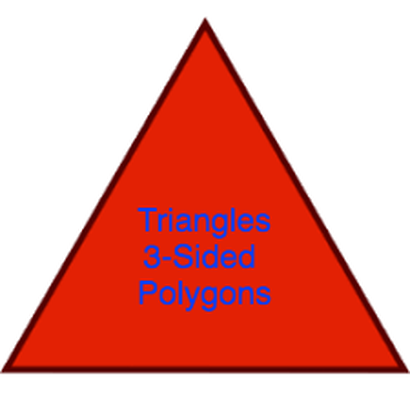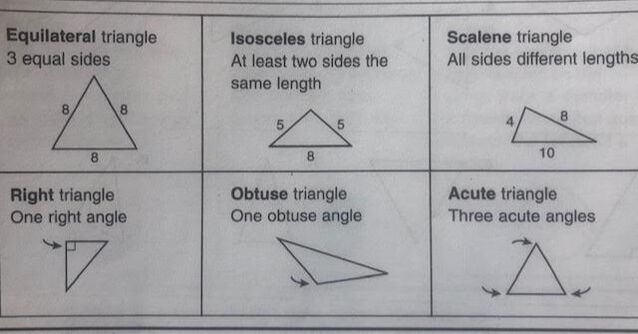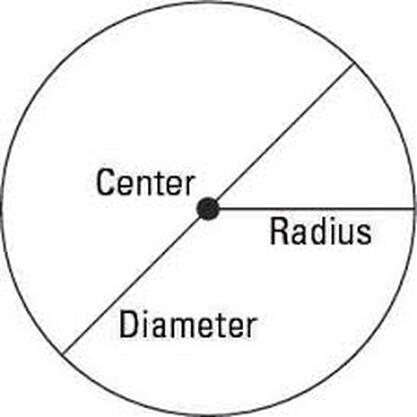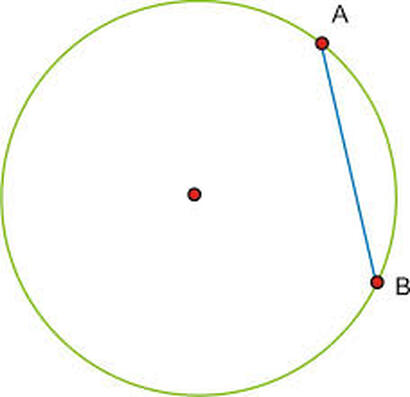A triangle is classified by the kind of sides it has. It is also classified by the kind of angles it has.
Below are examples of triangles.
Look at the top row. This row shows three ways that triangles are classified by the kind of sides it has.
For example........The first one is equilateral. Equi means equal, and lateral means sides. All sides are equal. That is the first way we classify that triangle.
The bottom row shows that the second way we classify triangles is by the kind of angles it has.
Now let's look at triangle and examine BOTH the kinds of angles and sides that it has.
Check out the angles of that first top triangle. They are all acute, right? So that triangle is an acute equilateral. Scroll down for more.
Below are examples of triangles.
Look at the top row. This row shows three ways that triangles are classified by the kind of sides it has.
For example........The first one is equilateral. Equi means equal, and lateral means sides. All sides are equal. That is the first way we classify that triangle.
The bottom row shows that the second way we classify triangles is by the kind of angles it has.
Now let's look at triangle and examine BOTH the kinds of angles and sides that it has.
Check out the angles of that first top triangle. They are all acute, right? So that triangle is an acute equilateral. Scroll down for more.
Soooo, now let's look at the top row again, this time the middle triangle. Again, the first way to classify is by the lines. This middle one has 2 sides that are the same length. That classifies it as an isosceles (pronounced eye-sauce-uh-leez) triangle. The second way to classify is by the angles. That second top triangle has two acute angles, not 3. So it is NOT an acute triangle. It has one obtuse angle. That makes it an obtuse triangle. So the top, middle triangle is an obtuse isosceles triangle. (That's a mouthful!)
Now, look at the last triangle on the top. The first way to classify is the sides. All of the sides of this triangle are different. That makes it a scalene triangle. The second way we classify is by the angles. The corner angle between the 4 and 8 is a right angle. So that triangle is a right triangle. That makes the last triangle on the top a right scalene triangle.
Now, look at the last triangle on the top. The first way to classify is the sides. All of the sides of this triangle are different. That makes it a scalene triangle. The second way we classify is by the angles. The corner angle between the 4 and 8 is a right angle. So that triangle is a right triangle. That makes the last triangle on the top a right scalene triangle.
Remember that line segments have an end point on both sides. The center of a circle is called.....wait for it.....the center.
Picture one: The radius of the circle starts in the middle (that's the first point of the segment), and goes to the side. That is the second point of the segment. If the radius has letters on it, then it is named by those letters. For example, in the first picture, lets call the center point C, and the point that touches the side will be E. So that radius is named CE (and has a line over the top of the letters).
Also in Picture One: The diameter is a line segment that goes all the way across.....BUT it has to pass through the center! There are 3 points in a diameter. The first point is one of the sides where it starts (it doesn't matter which side is the starting point). The second point is the center point. The 3rd point is the other side where the segment ends. You can give each of these a letter name, too. Let's name the first point A, the center point E and the other side point P. Draw and label those points. The diameter would be THE WHOLE LINE SEGMENT, NOT JUST TO THE MIDDLE! So the diameter is named AP with a line over the letters. If I called that line segment "EP", or "AE" , it would be a radius, right?
Picture two: Do you see how that line goes across but doesn't pass through the center? So, that line segment is called a chord. A Chord is a line segment that passes across a circle from one side to another without crossing the center of the circle.
Picture one: The radius of the circle starts in the middle (that's the first point of the segment), and goes to the side. That is the second point of the segment. If the radius has letters on it, then it is named by those letters. For example, in the first picture, lets call the center point C, and the point that touches the side will be E. So that radius is named CE (and has a line over the top of the letters).
Also in Picture One: The diameter is a line segment that goes all the way across.....BUT it has to pass through the center! There are 3 points in a diameter. The first point is one of the sides where it starts (it doesn't matter which side is the starting point). The second point is the center point. The 3rd point is the other side where the segment ends. You can give each of these a letter name, too. Let's name the first point A, the center point E and the other side point P. Draw and label those points. The diameter would be THE WHOLE LINE SEGMENT, NOT JUST TO THE MIDDLE! So the diameter is named AP with a line over the letters. If I called that line segment "EP", or "AE" , it would be a radius, right?
Picture two: Do you see how that line goes across but doesn't pass through the center? So, that line segment is called a chord. A Chord is a line segment that passes across a circle from one side to another without crossing the center of the circle.



